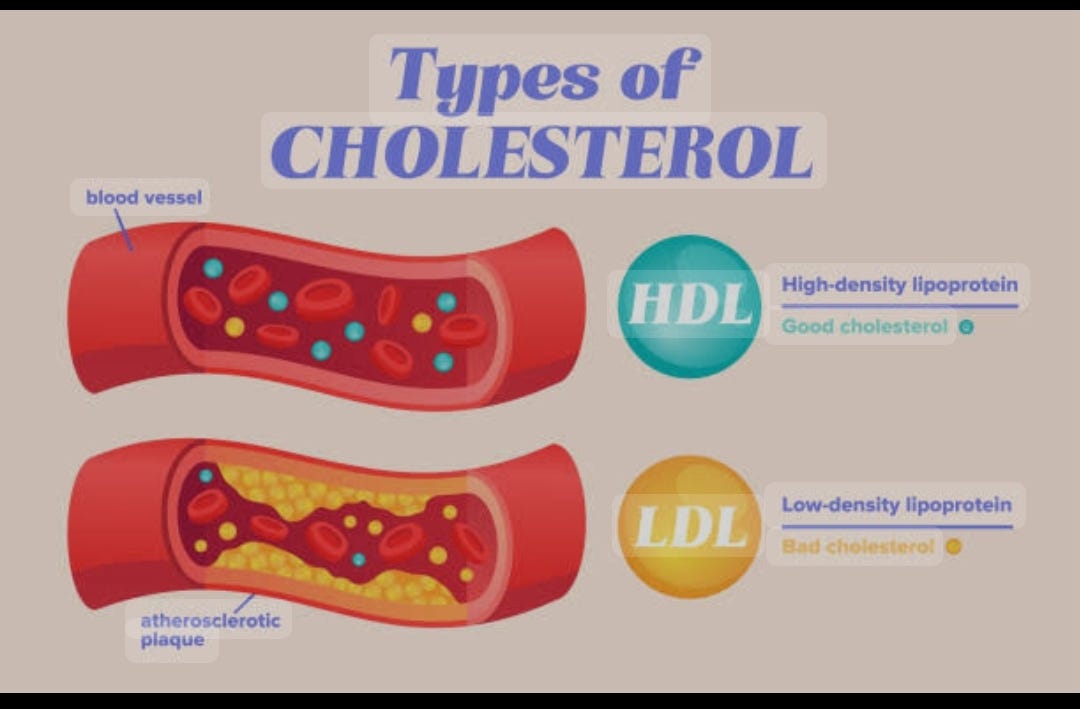Can something considered essential for heart health—good cholesterol—be linked to an increased risk of eye disease? Recent studies suggest a potential connection between high levels of high-density lipoprotein (HDL), commonly known as “good cholesterol,” and glaucoma. Naturally, this revelation has left many questioning whether protecting their heart might inadvertently harm their eyes. While the link deserves investigation, it’s important not to jump to conclusions. Let’s explore the evidence, the science behind it, and why making drastic decisions based on this connection may not be the best idea.
Understanding Cholesterol: Friend and Foe
Cholesterol is a fatty substance that’s vital for the human body. It plays a role in building cell membranes, synthesizing hormones, and producing vitamin D. However, not all cholesterol is created equal:
Low-Density Lipoprotein (LDL) – Often labeled “bad cholesterol,” LDL contributes to plaque buildup in arteries, increasing the risk of heart disease and stroke.
High-Density Lipoprotein (HDL) – Known as “good cholesterol,” HDL helps remove excess cholesterol from the bloodstream, transporting it back to the liver for processing and disposal. Higher levels of HDL are generally associated with a reduced risk of cardiovascular disease.
For decades, medical professionals have recommended raising HDL levels to improve heart health. So, the suggestion that high HDL might be harmful—especially to eye health—comes as a surprise.
What Is Glaucoma?
Glaucoma is a group of eye diseases that damage the optic nerve, often due to increased intraocular pressure (IOP). It’s one of the leading causes of blindness worldwide, affecting more than 76 million people. The most common form, primary open-angle glaucoma (POAG), develops slowly and without obvious symptoms until vision loss occurs. Risk factors include age, family history, elevated IOP, and, as recent studies suggest, possibly high HDL levels.
The HDL-Glaucoma Connection: What the Research Says
Recent research has examined the relationship between lipid metabolism and glaucoma risk. A few studies indicate that individuals with elevated HDL levels may have a higher chance of developing POAG. Scientists hypothesize that abnormal lipid transport in the eye could impair the drainage of aqueous humor (the fluid inside the eye), resulting in elevated IOP and subsequent optic nerve damage.
One key study analyzed data from large populations and found a correlation between high HDL levels and increased glaucoma risk. However, the study did not establish a direct causal relationship, which is critical to understanding these findings.
Correlation vs. Causation
Just because two factors are associated doesn’t mean one causes the other. There are several possible explanations for the link between high HDL and glaucoma that don’t involve HDL being inherently harmful:
- Shared Genetic Factors – Some genetic variants may influence both lipid metabolism and eye health, creating an indirect association.
- Underlying Health Conditions – Individuals with metabolic disorders or chronic inflammation may experience changes in HDL levels and eye health simultaneously.
- Reverse Causation – In some cases, the development of glaucoma or eye disease may affect lipid metabolism, rather than high HDL causing glaucoma.
Should You Be Concerned?
If you’ve been working hard to raise your HDL levels for better cardiovascular health, this research might leave you feeling conflicted. However, experts caution against abandoning heart-healthy practices based on these preliminary findings. There are several reasons why you shouldn’t panic:
- The Evidence Is Not Conclusive
While the studies are intriguing, they are observational and cannot prove cause and effect. Further research, especially clinical trials, is needed to confirm whether high HDL directly contributes to glaucoma risk. - Heart Health Still Matters
Cardiovascular disease is one of the leading causes of death worldwide. Lowering LDL and maintaining healthy HDL levels remain essential strategies for reducing heart disease risk. Neglecting your cardiovascular health over an uncertain connection to glaucoma could have serious consequences. - Glaucoma Is Manageable
Even if future studies confirm a link between high HDL and glaucoma, early detection and treatment can prevent significant vision loss. Regular eye exams are crucial, especially for those at higher risk due to age or family history.
Balancing Heart and Eye Health
Rather than choosing between your heart and your eyes, it’s possible to take steps that promote overall health. Here’s how you can strike a balance:
- Follow a Balanced Diet
A diet rich in fruits, vegetables, whole grains, and healthy fats supports both cardiovascular and eye health. Foods high in omega-3 fatty acids (like salmon and walnuts) may protect against glaucoma while also promoting heart health. - Exercise Regularly
Physical activity not only raises HDL levels but also reduces IOP, lowering the risk of glaucoma. Aim for at least 150 minutes of moderate exercise per week. - Monitor Your Eye Health
Regular eye exams are your best defense against glaucoma. If you have elevated HDL levels or a family history of glaucoma, talk to your ophthalmologist about your risk and consider more frequent checkups. - Avoid Smoking
Smoking increases the risk of both cardiovascular disease and glaucoma. Quitting smoking can significantly reduce your risk for both conditions.
The Path Forward
The connection between HDL and glaucoma is an emerging field of research, and while it raises interesting questions, there’s no need to panic. The evidence isn’t strong enough to warrant changing current guidelines for cholesterol management. Protecting your heart is still one of the best things you can do for your overall health.
In the meantime, stay informed, maintain a healthy lifestyle, and schedule regular checkups with both your primary care physician and ophthalmologist. Science is always evolving, and staying proactive is your best strategy for maintaining both your vision and your heart health.
Conclusion
Good cholesterol, bad cholesterol, glaucoma—these complex topics remind us how interconnected our health truly is. Although the potential link between HDL and glaucoma is worth exploring further, it shouldn’t scare you into abandoning your heart health goals. Instead, take a comprehensive approach to wellness, focusing on balance, prevention, and regular medical care. After all, a healthy heart and healthy eyes are both worth protecting.
